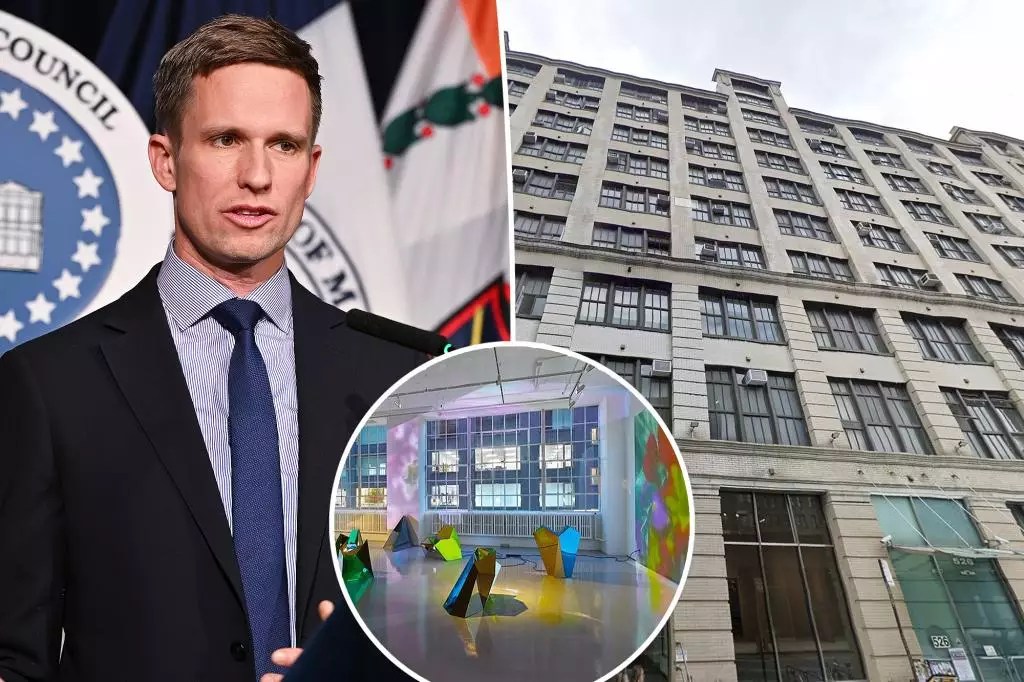The West Chelsea Arts Building holds a special place in New York City’s expansive art scene. Established in 1993 by philanthropist Gloria Naftali and her late husband Raymond, this iconic structure has served as a sanctuary for artists and galleries alike. Nestled at 508-534 West 26th Street, the 400,000-square-foot edifice has hosted renowned names such as Ross Bleckner, Louise Fishman, and Hiroshi Sugimoto, fostering a vibrant creative environment. However, in the wake of Gloria’s death in September 2022, concerns loomed over its future as her estate has placed the building on the market for a staggering $170 million. This development has ignited fears among tenants and local leaders about potential displacement and the loss of an essential creative space.
In response to the sale’s announcement, local leaders, including City Council member Erik Bottcher, US Representative Jerry Nadler, and State Senator Brad Hoylman-Sigal, have raised their voices in a collective plea to preserve this cultural haven. They argue that the impending sale threatens not only the livelihoods of approximately 200 resident artists but also the very fabric of the Chelsea community. A letter sent to the Raymond and Gloria Naftali Foundation highlights their concerns, stressing that many tenants have deep-seated connections to the area. The artists fear that a new owner may prioritize profits over cultural heritage, leading to skyrocketing rents and the subsequent displacement of established creatives.
The community’s pushback is underscored by a sense of urgency. The letter explicitly references Gloria Naftali’s dying wish to maintain the building as a space primarily for artists and galleries. While it is important to note that this statement lacks legal enforceability, it captures the heartfelt intention of a benefactor dedicated to nurturing the arts. Local officials are requesting a meeting with the foundation to seek alternatives that would preserve the building’s artistic identity, emphasizing the importance of engaging tenants in discussions about its fate.
As New York City has evolved, its reputation as a haven for artists has been increasingly challenged by a relentless affordability crisis. Bottcher points out that maintaining artistic spaces is crucial for sustaining the city’s legacy as a creative epicenter. This sentiment resonates not only with the tenants of the West Chelsea Arts Building but also with the broader community, who view art as an indispensable element of urban life. The displacement of artists due to escalating rents symbolizes a concerning trend in many neighborhoods where cultural vibrancy is under threat.
In contrast, Derek Wolman, representing Naftali’s estate, has claimed that the foundation lacks sufficient resources to maintain the property, suggesting that proceeds from the sale would support charitable causes that were significant to Gloria. This rationale, while understandable from a financial standpoint, raises essential questions about priorities when it comes to the arts and cultural preservation. The narrative that real estate transactions must prioritize economic gain above cultural legacy is one that reverberates throughout the ongoing discourse.
With the sale not imminent, as Wolman noted, there exists a sliver of hope for community engagement in the decision-making process. Local leaders, tenants, and advocates must capitalize on this window of opportunity to promote dialogue with the Naftali Foundation. Their combined efforts could yield a potential solution that honors Gloria’s vision while addressing financial realities. Innovative strategies, such as establishing a community-led arts collaborative or a non-profit framework to manage the building, could ensure its continued use as a haven for creatives.
The West Chelsea Arts Building stands as a testament not only to the talents it has nurtured but also to the importance of community resilience in the face of change. As the debate surrounding its future unfolds, the stakes are high. The struggle to preserve this cultural touchstone reflects a larger battle against gentrification—a fight that many cities across the globe have encountered. By advocating for shared stewardship and a collaborative approach, the West Chelsea community can better navigate this turbulent landscape, ensuring that the arts continue to thrive well into the future.


Leave a Reply